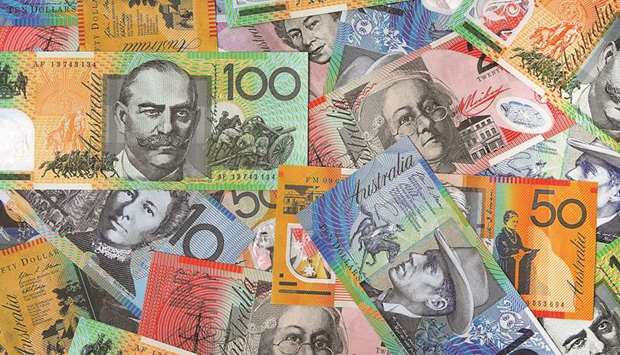The New Zealand dollar has never reached parity with its Australian peer. That may change this year.
The Aussie has slumped about 5% against the kiwi after touching a one-year high in November as monetary policy in the two nations started to diverge. Events this week have the potential to reinforce the trend.
Markets are pricing in at least one interest-rate cut by the Reserve Bank of Australia this year, despite an improvement in the country’s inflation and unemployment rates.
Some banks are even predicting two reductions.
In contrast, expectations for additional easing from the Reserve Bank of New Zealand have fallen sharply since it surprised investors in November by keeping rates unchanged. Markets are pricing in just 62% chance of one cut by RBNZ this year.
“Price action continues to show that monetary policy is key to AUD/NZD at the moment,” said Sean Callow, senior currency strategist at Westpac Banking Corp in Sydney. Australia’s “unusually strong” performance in trade relative to New Zealand isn’t enough to change the picture, he said. Investors will have plenty of opportunities this week to shore up these views.
The RBA will announce its first rate decision of the year today, Governor Philip Lowe gives a speech in Sydney on Wednesday and on Friday delivers semi-annual testimony to parliament.
There will be intense interest in the RBA’s views on how the coronavirus and recent bush fires are affecting the economy. Recent data show that consumer and business confidence have declined, which opens the door for dovish comments from Lowe. This would give the Aussie dollar a helping hand lower.
New Zealand’s fourth-quarter employment report on Wednesday is forecast to bolster evidence that the economy has turned the corner for the better, reducing the need for further easing this year.
This would confirm Governor Adrian Orr’s view that RBNZ needn’t rush to cut rates further because the country already has very stimulatory monetary conditions.
The pair is hovering above support at 1.0238, its low of September 14, 2016. Any breach of that level would help open up the road to parity, but there are no guarantees it could go all the way. Callow sees the pair tracking toward 1.01 by June, based on Westpac’s expectation for the RBA to cut its cash rate to 0.5% in April while the RBNZ holds steady at 1.0% through the first half of 2020.
Below are the region’s key economic data and events due this week:
Tuesday, February 4: RBA rate decision, New Zealand building permits, South Korea CPI, Malaysia trade balance.
Wednesday, February 5: RBA Governor Lowe speaks, New Zealand employment change and house prices, China Caixin services PMI, Japan services PMI, BoJ’s Wakatabe speaks, Indonesia 4Q GDP, Philippines CPI, Bank of Thailand rate decision.
Thursday, February 6: Australia retail sales ex-inflation, trade balance and 4Q business confidence, BoJ’s Masai speaks, South Korea BoP current account balance, BSP rate decision, Thailand CPI, RBI rate decision.
Friday, February 7: RBA Statement on Monetary Policy and Lowe’s semi-annual testimony to Parliament Committee, New Zealand 2-yr inflation expectation, China trade balance, Japan labour cash earnings and household spending, Malaysia industrial production.

Australian dollar banknotes of various denominations are arranged for a photograph in Sydney.
